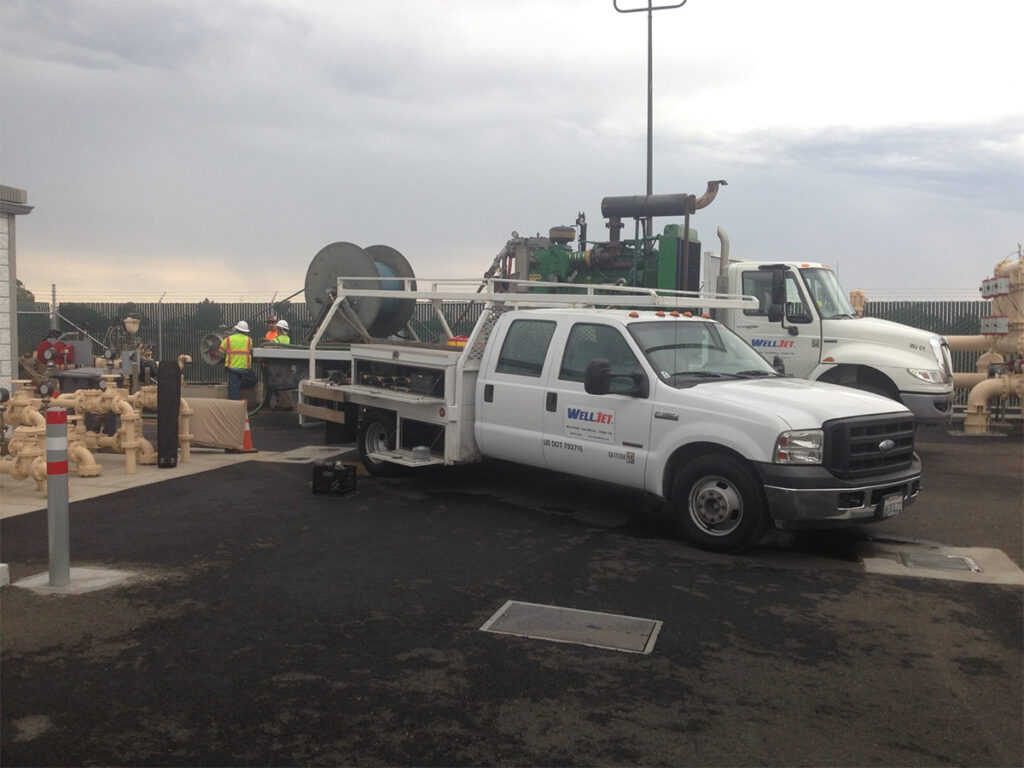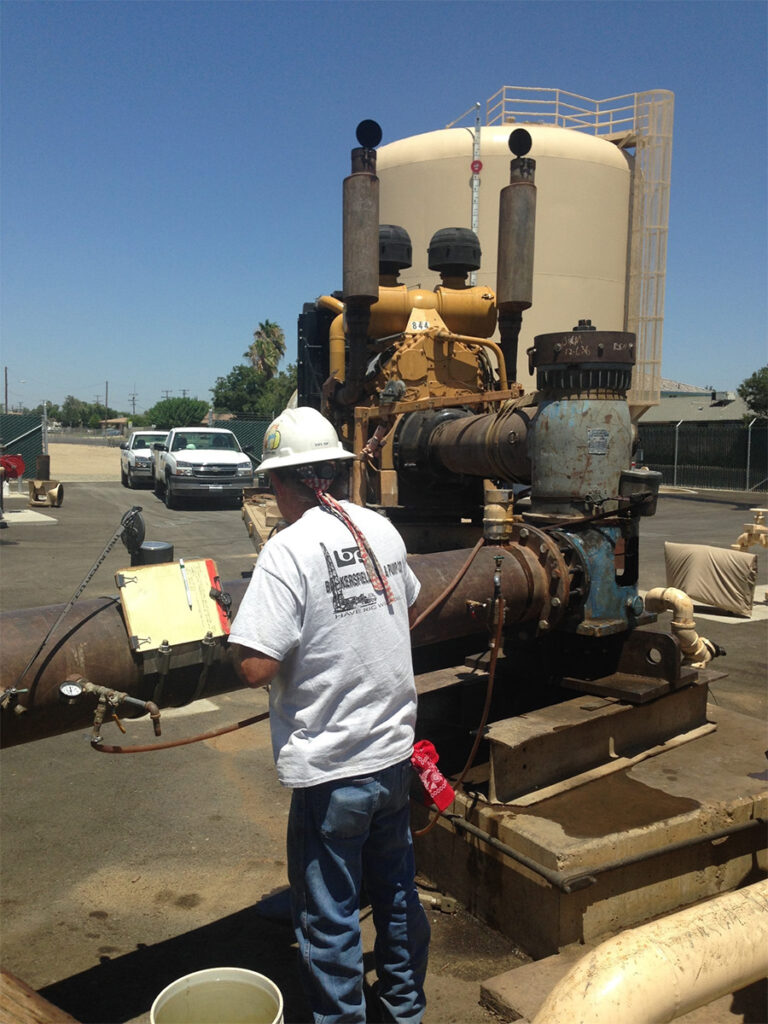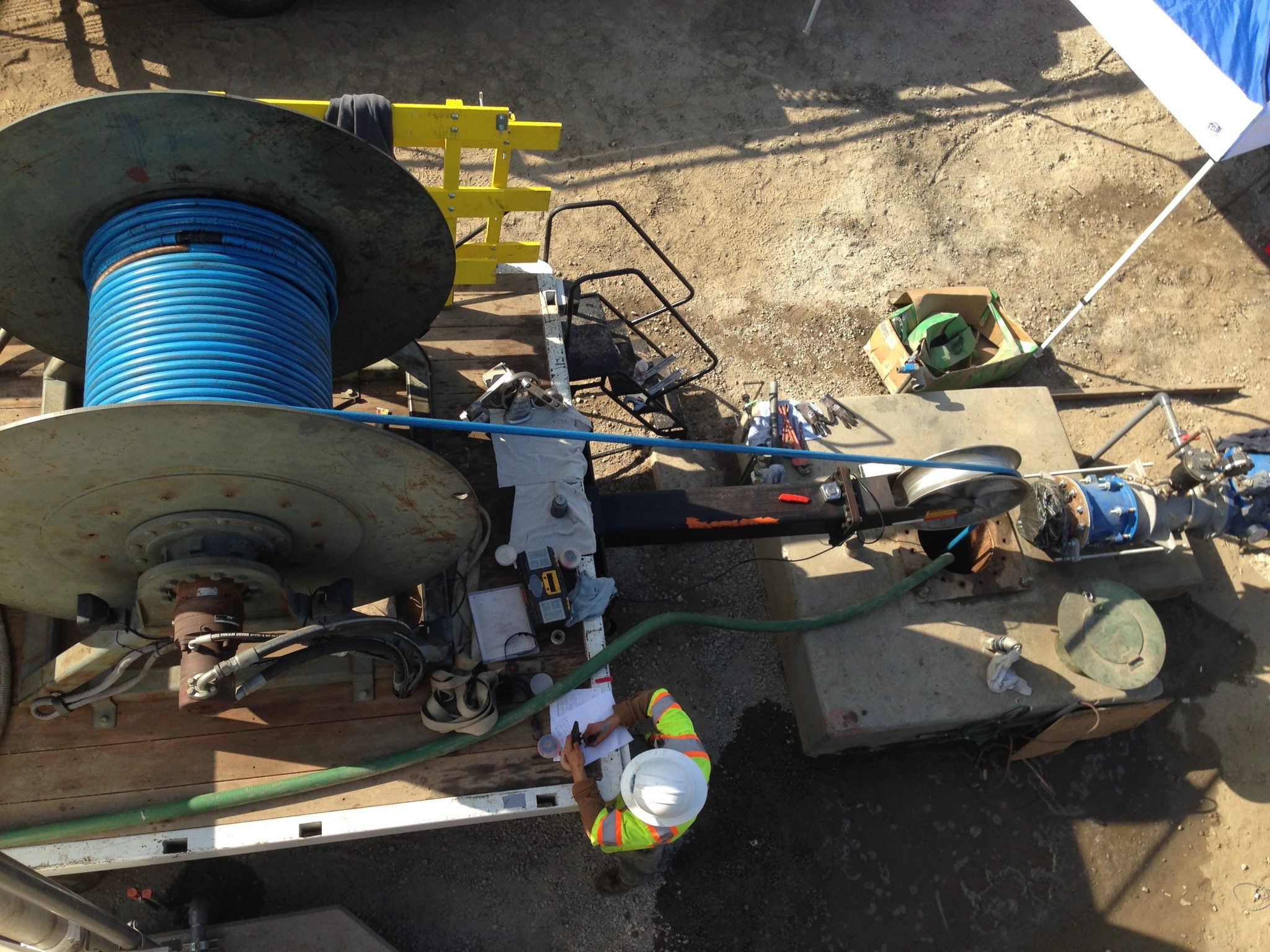1980s-vintage Municipal Well Restored to Better-Than-New Performance
California’s multi-year drought has made headlines around the world. Rainfall in the Central Valley has been minimal, while summer temperatures soar. Demand for groundwater continues to grow – along with that for the energy required to pump it. With budgets tight, the balancing act for water systems managers seems to require the skills of a Wallenda.
The City of Delano’s Well #22 was drilled in the late 1980s. Mild steel, total depth of 1,287’, ID 15.25”, vertical slot perforations from 897’-1,287’. The well was test pumped at 1,500 gpm, and delivered 1,250 gpm when put into production.
As production and efficiency declined, a rehabilitation was attempted in June, 2014. Flow was restored to 1,250 gpm – but the success was short-lived; within a few months, production had fallen back down to 600 gpm. The pump was set at 500’ – and drawdown was sucking right down to the bowls. With a static water level of 363’, this provided a specific capacity of just 4.4.
Bakersfield Well & Pump was tasked with rehabilitating Well #22. The goal was not only to restore flow, but also to boost efficiency – since the on-site arsenic treatment system is set up to only handle 1,250-1,300 gpm.
Downhole video recorded on May 18, 2015 showed severe plugging of the perforations. Three patches in the well were noted.
BWP began the rehabilitation process by pre-acidizing and brushing. WellJet was brought in to open up the perforations, and generate energy into the gravel pack to break up the obstructions that were impeding water flow.


Following jetting, BWP brought in a large development engine for several days of test pumping.
At the start of testing, with the pump set at 600’, the well produced 900 gpm at a pumping level of 445’, for a yield of 14.5 – quite an improvement over pre-rehabilitation numbers.
But BWP was just getting started.
The well was producing quite a lot of sand – 500 ppm – a normal circumstance immediately following the jetting process.
After 5 hours of test pumping, production was 2,000 gpm, pumping level 489, Specific Capacity of 18.5. Sand levels were coming down – to 378 ppm.
Test pumping continued – and the well’s performance continued to improve. After 37 hours of pump development and test pumping, flow rate exceeded 3,000 gpm – with a drawdown of 125’, for a specific capacity above 23. Sand levels had dropped to 30 ppm.
Production capability on Well #22 increased from 600 gpm to 3,000+ gpm — a +500% increase.
Specific Capacity improved from 4.4 to 23+ — also an increase of +500%.
A final two-hour test was performed, using the parameters that will be followed when Well #22 goes back online:
| SWL | 383 |
| GPM | 1,310 |
| PWL | 439 |
| DD | 56 |
| Yield | 23.4 |
| 5 min Sand | 30 ppm |
| 15 min Sand | 2.65 ppm |
WellJet is pleased to have participated in this very successful collaboration with Bakersfield Well & Pump.
We look forward to future opportunities together.


 Recovering Past Performance Metrics
Recovering Past Performance Metrics